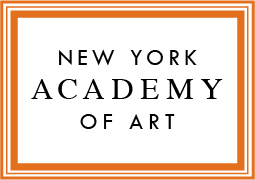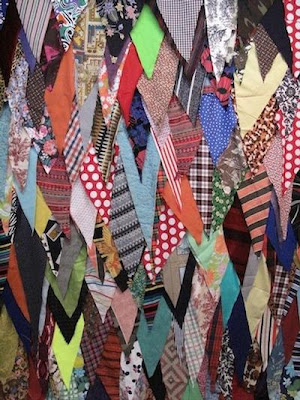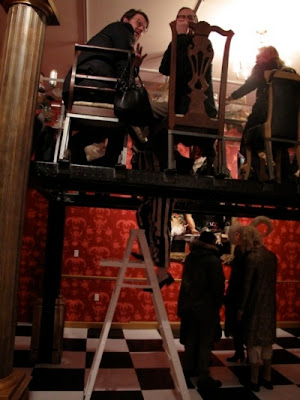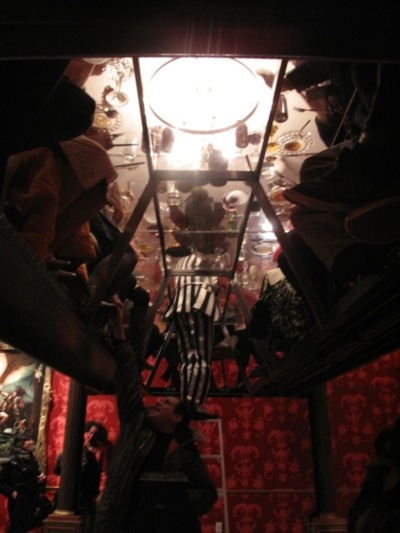Images courtesy of Allegra LaViola Gallery
Back in 2007, when she made the decision, selling art seemed easy. The economy was booming, and paintings were flying off the walls of the New York galleries where Allegra had been working. Having gained experience selling artwork, working with clients as an art consultant and organizing a few shows of her own, she felt ready to be the boss.
“There was this youthful eagerness and this desire to be in charge and to be the decider and in control,” Allegra said. “Whether that was smart or stupid I suppose only time will tell.”
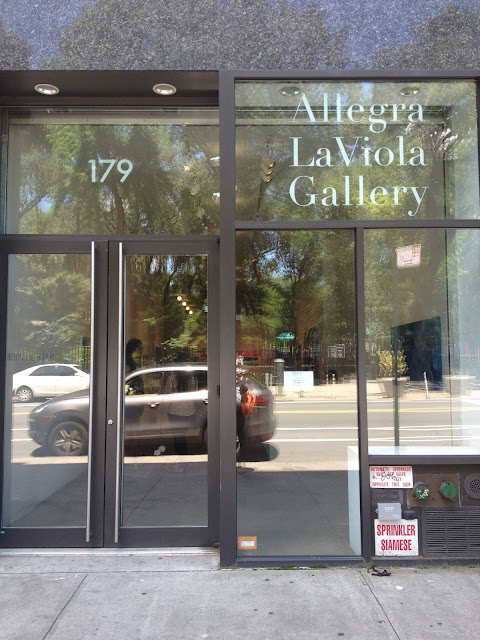 |
| 179 E Broadway, New York, NY 10002 |
Allegra LaViola Gallery may be best known for its interactive installations. In May, the gallery presented Amanda Browder’s PRISM/LIVIN/ROOM, an installation of stitched together fabric that the public was invited to transform on designated “sewing days.” For much of June, the gallery was the setting for a multimedia installation by Electra KB that imagined a women-led revolution of a fictional empire. It was interactive too; visitors were asked to confess wrongdoings to performers who would echo them back.
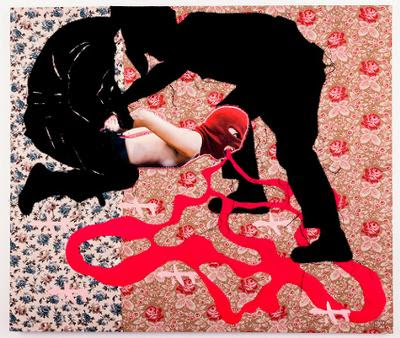 |
| Elektra KB’s Panopticism (sureiller et punir) (2013) |
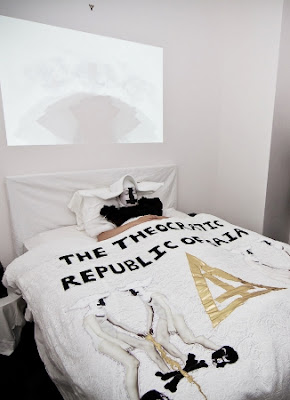 |
| Elektra KB’s White Papess in Catalytic Confessional Noise Machine (2011) |
Allegra’s interactive art events have often taken the form of theatrical dinners. One of the most memorable of these, according to Allegra, was Jennifer Catron and Paul Outlaw‘s December 2010 show Imeday Imeda Ollarday Icklenay, for which the artists transformed the gallery into what Allegra described as “The Frick on acid.”
Dinner guests sat at a long table raised in the air by a carlift. The artists had decorated the walls with painted wallpaper and surreal photographs referencing old master paintings. Throughout the evening, performers dressed as characters from the paintings climbed ladders to interact with the diners.
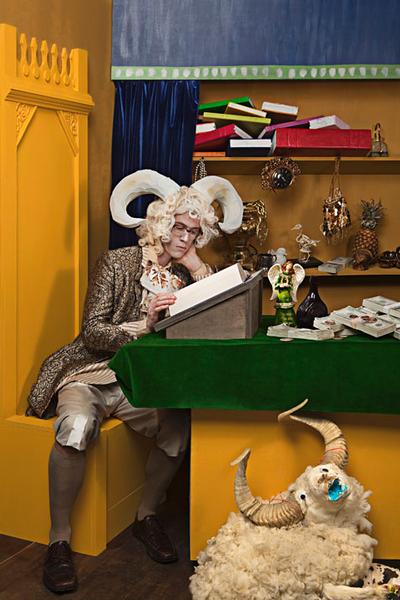 |
| Catron and Outlaw’s Aintsay Eromejay in Ishay Tudysay (2010) |
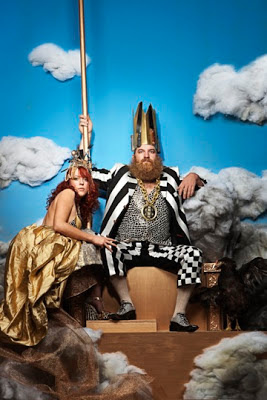 |
| Catron and Outlaw’s Euszay and Etisthay (2010) 010 |
Then of course, there was Laura Ginn‘s 2012 art event Tomorrow We Will Feast Again on What We Catch, an urban survivalist-themed dinner consisting of courses made from rats, cooked by chef Yuri Hart. “Laura and Yuri spent one year test-cooking rats until they found recipes that were good enough that they could pass muster,” Allegra said. “Laura made an entire dress out of rat pelts. … She was playing this video of her braining a deer in the snow, which was projected on the wall, while we were eating.” The event was covered by the New York Times.
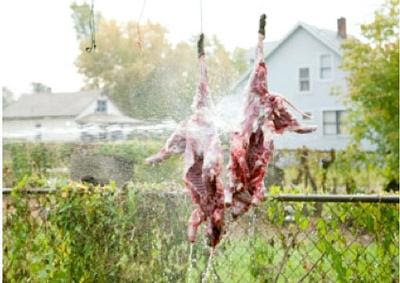 |
| Laura Ginn’s Untitled (Washing Carcasses), 2009009 |
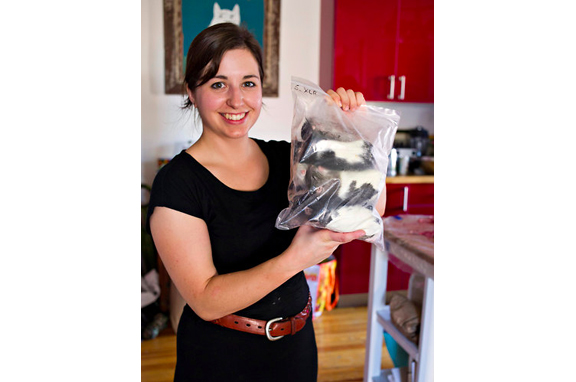 |
| Laura Ginn with some rats Credit: Evan Sung of The New York Times |
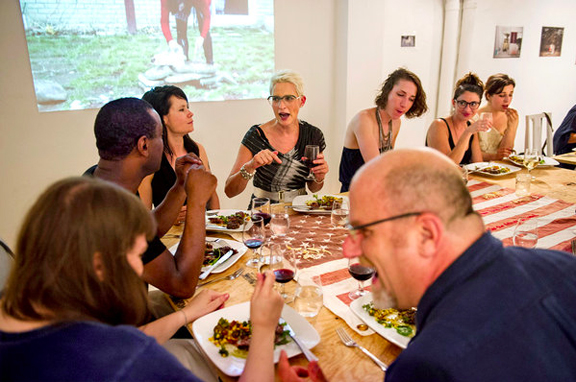 |
| Credit: Evan Sung of The New York Times |
A New York City native, Allegra studied art history at University of St. Andrews in Fife, Scotland. She loved painting of all kinds, but her interests were always more historical than contemporary. In fact, Allegra said she studied “no contemporary [art] at all,” writing her thesis on Venetian Renaissance painting. “I had missed everything from 1945 on, so theoretically I was extremely behind,” Allegra said, “but I perhaps had a greater sense of history and the genesis of art, rather than having leapt in at 1970 and thinking that these ideas were springing from nowhere.”
Perhaps most of all, however, when Allegra looks for pieces to show in her gallery she is seeking art that sparks a reaction in th viewer. “I like immersive,” Allegra said. “I think a minimalist painting can be just as immersive as a giant insane installation, bu there is something about walking into a space and being like, ‘Wow I am in another world.’”
| Sandi Slone, Worlds Apart (2012) |
| Jeremy Willis, One More (2012) |
Though Allegra acknowledged that figurative art is not currently considered to be at the cutting edge of contemporary art, she has no doubt that it will always have an important place in the art world.
“They used to say in my English class at University in order to be a good plumber you can’t just go in and replace the outside of the sink, you have to know how the pipes work,” she said. “You have to know how paint works or any media really. It’s not just opening up a tube that you got and splashing some crap on a canvas. You have to make sure you know how to build it, and painting needs to be built the same way a sculpture does.”
The Academy is thrilled to be partnering with Allegra LaViola Gallery for its 2013 Summer Exhibition and wishes to thank Allegra for her support and hard work!
The Academy’s Seventh Annual Summer Exhibition runs from June 27 to July 27.
